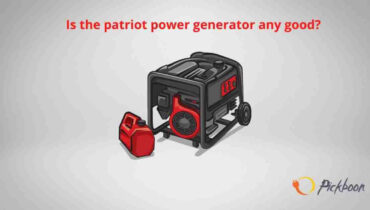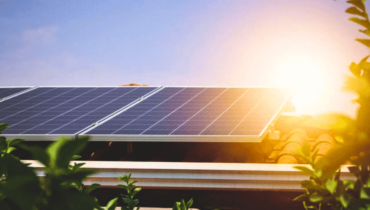Table of Contents
As the world increasingly turns towards renewable energy sources, the competition between solar and wind power has gained significant attention. Both technologies hold immense promise in reducing our dependence on fossil fuels and mitigating the effects of climate change. In this comprehensive comparison, we delve into the intricate details of solar and wind energy, shedding light on their workings, advantages, and limitations.
By the end of this exploration, you will have a clearer understanding of which renewable energy source might be the best fit for your specific needs. Join us as we embark on a journey to unlock the potential of solar and wind power, seeking a greener, more sustainable future.
In today’s world, the search for clean and renewable energy sources is gaining momentum. Two of the most popular choices for harnessing renewable energy are solar and wind power. Each has its unique advantages and disadvantages, making it essential to understand the differences between the two. In this article, we’ll provide a comprehensive comparison of solar and wind energy, helping you make an informed decision.
Understanding Solar Energy
Solar energy is a sustainable and renewable power source derived from the sun’s radiation. It works by converting sunlight into electricity through photovoltaic cells or solar panels. When sunlight strikes these cells, it generates a direct current (DC) that is then converted into alternating current (AC) for various applications.
Solar energy offers numerous advantages, including being clean, cost-effective, and versatile for installation in a wide range of locations. It is a key player in the transition to a more environmentally friendly and sustainable energy landscape. How Solar Energy Works
Solar energy harnesses power from the sun, turning it into electricity using photovoltaic cells. When sunlight hits these cells, it generates direct current (DC) electricity, which is then converted into alternating current (AC) for use in homes and businesses.
1. Motor Fuse Holders, Inverter Circuit Breaker Car Audio Solar Energy Inline Circuit Breaker Fuse Inverter with Waterproof Cover (300A):
- This is a circuit protection device designed to safeguard electrical systems in various applications, including automotive, marine, and solar energy setups.
- The 300A rating indicates it can handle a current of up to 300 amperes. It’s crucial to select the right amperage to protect your system effectively.
- The waterproof cover ensures the breaker remains protected from environmental factors, making it suitable for outdoor or marine use.
- This component is often used to protect equipment like inverters, ensuring they don’t get damaged due to electrical faults.
2. SUNSUL Solar Angle Guide, Solar Panel Accessories:
- This is a tool used in the setup and adjustment of solar panels to optimize their energy output.
- The “Solar Angle Guide” helps users adjust the tilt or orientation of solar panels to capture the maximum amount of sunlight throughout the day, improving the efficiency of solar energy conversion.
- It’s particularly valuable for portable or foldable solar panels that need manual adjustment to track the sun’s position for optimal energy generation.
3. LANGIR DC Circuit Breaker 2 Poles 1-63A 500V for Solar Energy System and Other DC System DIN Rail Installation (50A):
- This is a DC (direct current) circuit breaker designed for use in solar energy systems and other DC systems.
- The “2 Poles” indicates it can interrupt two separate electrical circuits, which is common in solar systems where you might have different strings of solar panels.
- The 50A rating means it can handle a current of up to 50 amperes, providing protection against overcurrent and short circuits.
- The “DIN Rail Installation” suggests it’s suitable for mounting on standard DIN rails, which are commonly used in electrical enclosures and control panels.
Note: These products are essential components in electrical and solar energy systems, providing protection and efficiency improvements in the utilization of solar power. When selecting such components, it’s crucial to match their specifications to the requirements of your specific system to ensure reliable and safe operation.
Advantages of Solar Energy
- Clean and Green: Solar power produces no greenhouse gas emissions, making it an environmentally friendly energy source.
- Low Operating Costs: Solar panels have minimal maintenance requirements and can last for 25-30 years.
- Location Flexibility: Solar panels can be installed on rooftops, in rural areas, and even in remote locations.
- Incentives and Tax Credits: Many governments offer incentives and tax credits for installing solar panels.
Disadvantages of Solar Energy
- Intermittency: Solar power is dependent on sunlight, which can be inconsistent in certain locations and weather conditions.
- High Initial Costs: The upfront cost of installing solar panels can be significant.
- Energy Storage: Additional systems are needed to store excess energy for nighttime or cloudy days.
Understanding Wind Energy
Wind energy is a renewable power source generated by the kinetic energy of moving air. It operates through the use of wind turbines, which have rotating blades that capture the energy from the wind’s movement. This mechanical energy is then transformed into electricity using a generator. Wind energy is sustainable and eco-friendly, producing no greenhouse gas emissions.
It is particularly suitable for large-scale electricity generation and offers relatively low operating costs. However, its efficacy depends on consistent and sufficient wind speeds, making location a critical factor for its success. Wind energy plays a crucial role in reducing our reliance on fossil fuels and mitigating climate change.
1. Wind Energy: Blown Away! (Powering Our World):
- This book appears to be a comprehensive guide or informative resource on wind energy. The title “Blown Away!” suggests it may provide an engaging and accessible introduction to the topic.
- The subtitle, “Powering Our World,” hints at the central theme of the book, which is likely to explore how wind energy plays a vital role in meeting global energy needs while reducing environmental impact.
- It may cover a wide range of aspects, from the basics of wind energy to its real-world applications and its significance in the context of clean and renewable energy sources.
2. Wind Energy: Fundamentals, Resource Analysis and Economics:
- This book’s title indicates a more specialized and academic focus on wind energy. It’s likely to provide a deep understanding of the fundamental principles behind wind energy.
- “Resource Analysis” suggests that the book may delve into assessing the availability and suitability of wind resources for energy generation.
- The inclusion of “Economics” suggests it will explore the economic aspects of wind energy, including its costs, benefits, and financial viability.
How Wind Energy Works
Wind energy harnesses the power of moving air to generate electricity. The process begins with wind turbines, which consist of blades mounted on a hub. As the wind blows, it causes the blades to rotate, creating kinetic energy. This kinetic energy is then converted into electrical power through a generator within the turbine.
The generator uses electromagnetic induction to produce alternating current (AC) electricity. This electricity can be integrated into the grid for various applications, from powering homes and businesses to supporting large-scale energy projects. Wind energy is a sustainable and clean source of power, contributing to a greener and more sustainable energy future.
Advantages of Wind Energy
- Sustainability: Wind is a natural and sustainable resource.
- High Energy Output: Wind turbines can produce a significant amount of electricity, making them suitable for large-scale projects.
- Reduced Operating Costs: Once installed, wind turbines have relatively low operating costs.
- No Greenhouse Gas Emissions: Wind power is clean and doesn’t contribute to air pollution.
Disadvantages of Wind Energy
- Intermittent Wind: Wind power is highly dependent on wind speeds, making it less reliable in some areas.
- Environmental Impact: Wind turbines can have environmental impacts, such as bird and bat collisions and landscape disruption.
- Space Requirements: Wind farms require large tracts of land, potentially impacting local communities.
Decision Factors
Several critical factors influence the choice between solar and wind energy:
- Geographic Location: Your region’s climate and wind patterns significantly impact your decision. Areas with consistent, strong winds may favor wind power, while sunny locations may be better suited for solar energy.
- Budget Considerations: Your budget plays a vital role. Solar panels are more cost-effective for smaller installations, while wind turbines require a more substantial initial investment.
- Environmental Impact: Consider the environmental effects of both energy sources. Solar energy typically has a smaller ecological footprint, while wind turbines can impact landscapes and local wildlife.
- Energy Needs: Assess your energy needs, both short-term and long-term. Smaller residential setups might lean towards solar, while large-scale projects can benefit from wind energy’s higher output.
By carefully considering these factors, you can make an informed decision that aligns with your specific energy goals and circumstances.
FAQs
1. What is solar energy?
Solar energy is the energy harnessed from the sun’s radiation. It is converted into electricity through photovoltaic cells or solar panels. These cells capture sunlight and convert it into electrical power, which can be used to supply electricity to homes, businesses, and various applications.
2. How do solar panels work?
Solar panels work by using photovoltaic cells to capture sunlight. When sunlight hits the cells, it creates an electrical current (DC). This direct current is then transformed into alternating current (AC), which is what our homes and businesses use.
3. What are the advantages of solar energy?
The advantages of solar energy include being a clean and sustainable source of power, having low operating costs, offering location flexibility for installation, and the availability of government incentives and tax credits to promote its use.
4. What are the disadvantages of solar energy?
Solar energy’s disadvantages include intermittency due to weather and nightfall, high initial installation costs, and the need for additional energy storage solutions.
5. What is wind energy?
Wind energy is the power generated from the movement of air, typically captured by wind turbines. The kinetic energy produced when the wind turns the blades of these turbines is converted into electricity through generators.
6. How do wind turbines work?
Wind turbines work by using the kinetic energy from the wind to turn their blades. This mechanical energy is then converted into electrical power through a generator. The electricity generated can be distributed for various uses.
7. What are the advantages of wind energy?
Wind energy is a sustainable resource, capable of producing high energy output, with relatively low operating costs. It also does not produce greenhouse gas emissions, making it an environmentally friendly option.
8. What are the disadvantages of wind energy?
The disadvantages of wind energy include its dependency on wind speed and consistency, potential environmental impacts like bird and bat collisions, and the need for significant space for wind farms.
9. Which is better, solar or wind energy?
The choice between solar and wind energy depends on various factors, including geographic location, budget, and environmental considerations. There is no one-size-fits-all answer; each has its own strengths and weaknesses.
10. Are solar and wind energy compatible?
Solar and wind energy are compatible and can complement each other in a renewable energy strategy. Combining these sources can provide a more consistent and reliable energy supply.
Conclusion
In the solar vs. wind energy debate, there’s no one-size-fits-all answer. Your choice will depend on your location, budget, and environmental considerations. Both solar and wind energy are valuable sources of renewable power, contributing to a greener and more sustainable future. By understanding their advantages and disadvantages, you can make an informed decision that aligns with your specific needs and goals.
When it comes to renewable energy, the path forward involves embracing both solar and wind power, as they complement each other in the transition to a cleaner, more sustainable world.

